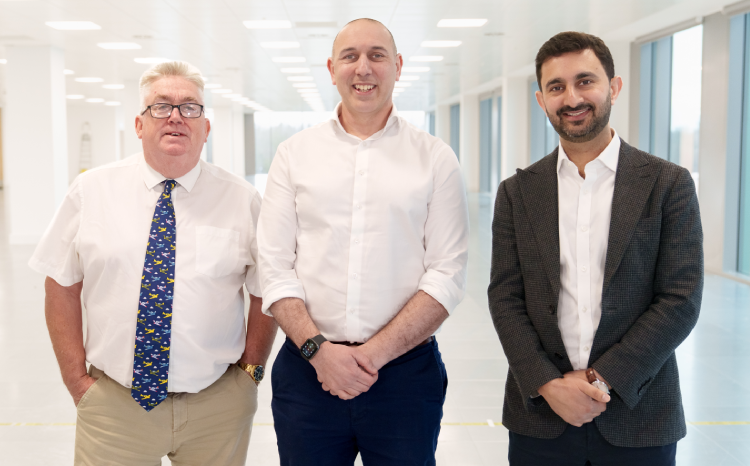Enter the CCG: post Wachter, what can hospitals learn from primary care?
- 25 October 2016

In general, the Wachter Review was extremely well-received when it was unveiled in Manchester last month.
However, the report commissioned by health secretary Jeremy Hunt from the eponymous US ‘digital doctor’ Robert Wachter, has come under fire for the paucity of UK clinicians and GPs in the review team.
This is important, because primary care IT in the UK is reckoned to be about 15 years ahead of IT in the acute sector, and potentially contains many lessons for secondary care.
In fact, two practising GPs (Marcus Baw and I) helped with the preparation of the preliminary background papers for the team. Indeed, some of our ideas appeared almost verbatim in the final report.
What are the lessons for secondary care from primary care? There are many, but they are principles, not protocols. The acute sector works quite differently from primary care. Hospitals need work out how to apply these principles in their own particular circumstances.
It’s not just the IT…
Medical IT – at any level – doesn’t stand alone: it’s integrated into the healthcare situation. We all have to work out, with a great deal of lateral thinking, how IT interacts with and affects the patients, the staff, the paperwork and the processes of healthcare delivery.
Indeed, many of the long-term benefits of IT are actually experienced in other fields. For example, paperless working reduces the need for the physical paper record, thus saving storage space; but it also saves vast amounts of staff time when there is no longer a need to collect records from the repository, convey them to the clinician, collect them afterwards and re-file them.
In addition, with electronic records there’s hardly ever such a thing as a lost file, or one that’s ‘out’ with someone else; which means that healthcare workers, whoever and wherever they are, have instant, reliable access to the current patient record. In turn, this improves patient safety.
Transferring from paper recording
It’s easy to assume that the way to transfer painlessly from paper-based to electronic notes is to do it gradually, running a dual system whereby some of each patient’s notes are in electronic form and some are on paper.
In theory this looks good, doesn’t it? A transfer like this could be slow and unthreatening, allowing clinicians and staff gradually to acquire IT skills. In practice, unless you keep excellent discipline, you will merely double the work and double the danger.
The problem with dual recording is that to be certain of the latest information the clinician has to look at both the paper and the electronic record, thus increasing the time spent interacting with the patient’s record(s), rather than reducing it.
In the past, vast numbers of GP practices caused immense problems for themselves by instigating an extended transfer from paper to electronic recording, often to satisfy the needs of the less IT-tolerant in the practice.
But we have to be sympathetic. Clinicians joined up to do healthcare, not play with IT. There is a very great resistance (not to say fear) in some quarters over using new methods.
Clinicians – who are often very wary of making mistakes – are frequently hesitant over trusting a new system (or perhaps, trusting themselves to use the new system), and want to proceed slowly; which in their minds means changing across slowly from paper to electronic recording.
They can’t – it doesn’t – work. All it will do is cause frustration, double the work – at least – and confirm in those same clinicians’ minds that computerisation is an irritating, intrusive, time-wasting project.
Equally, immediately transferring from paper to computer isn’t necessarily a good idea either. Although it has been done, to my mind it’s a bit like trying to scale the North face of the Eiger on the first occasion you go hillwalking.
Working with a new system requires a colossal amount of learning: in general practice, as a rough rule of thumb it is reckoned that simply changing from one primary care system to another creates an 18-month dip in output as everyone learns the foibles of the new program. (Note — just changing systems: not even moving from paper to computer.)
What’s the solution?
Certainly, minimise dual running as much you can. It can often be best to transfer across in stages. The more clearly defined and memorable each stage is, the better. That way, staff and clinicians will remember most easily where to record specific items and – perhaps more importantly – know infallibly where to look them up.
Thus you might begin by agreeing that from a particular date anything with a value – BP, lab reports, coded data, and so forth – must be recorded electronically; though you can also store it on paper if you want.
Consequently, after that date, the first place to look for the latest value will clearly be on the computer, and only if you don’t have an entry after the cross-over date will you need to view the paper record.
It also means that you can start using the computer for clinical reporting, though there will inevitably be a lag time to account for patients who are only reviewed infrequently.
Similarly, it may be helpful early on to choose to store all new communications – letters, discharge notes, etc – on the computer, even if copies are still sometimes filed in the paper record. Again, everyone will then know that accessing the computer will always find any of this type of information which has been created after the cross-over date.
The role of discipline
Discipline is crucial to safe working. Any organisation transferring from paper to electronic recording must do it in a controlled way.
If an organisation decides that from 1 December all blood pressures will be recorded electronically – even if there is dual recording on paper – then this must apply to everyone in the entire organisation. And it should be policed.
There must be no exceptions, not even for that nice Dr A, due to retire in four months, who really can’t get her head around IT and secretly plans to record everything just on paper. Surely no-one will notice…
The danger is that Dr A won’t record items in the electronic record that others expect to be there, so that when Dr B in a different department needs urgently to discover the most recent previous BP he may view the electronic record without realising that Dr A’s latest measurement isn’t actually there. Patient harm may well follow.
Therefore, when swapping across, everyone has to adhere to the agreed protocols. It’s just not safe otherwise… More next month.
About the author: Dr John Lockley is clinical lead for informatics at Bedfordshire Clinical Commissioning Group and a part-time GP. Follow him: @DrWJL





